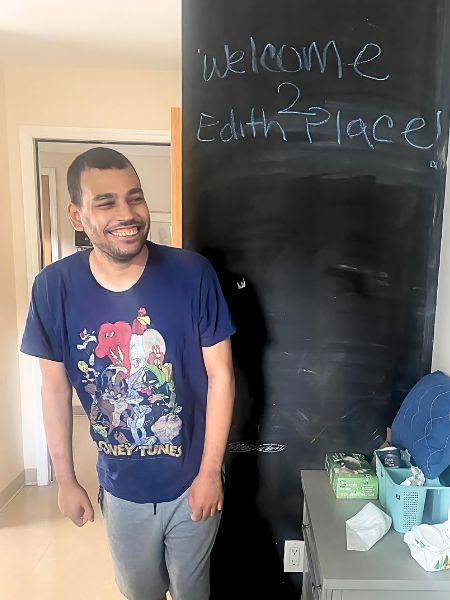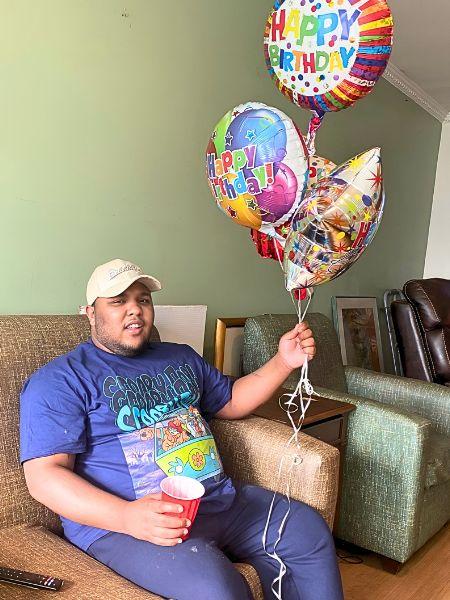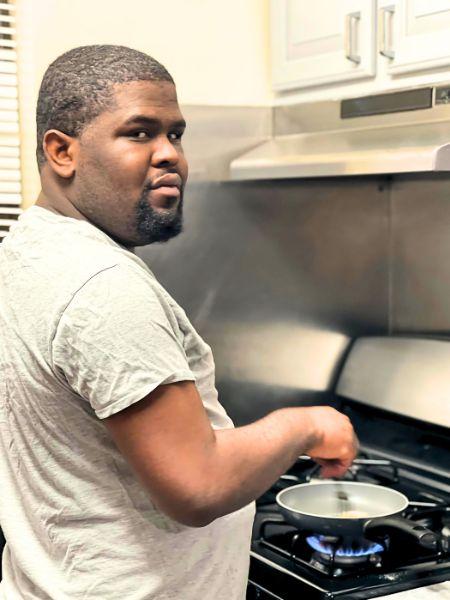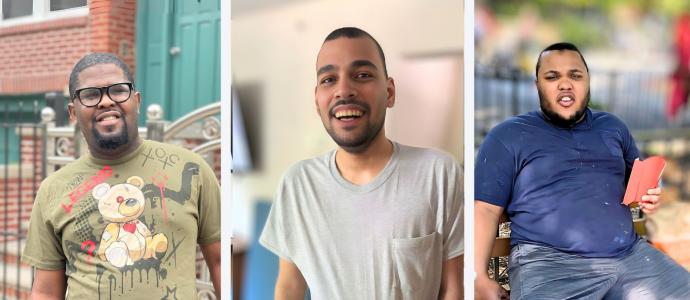Share

Roberto Jimenez opened the door to his new bedroom in a YAI residence on Long Island and looked around in disbelief. The walls were painted his favorite color, light blue, with one wall made up of chalkboard – which staff added as a personal touch. He noticed the brand-new furniture and a bed fitted with fresh sheets. As he looked around, he asked his mom, “Bed? Mine? Sleep?” With tears in her eyes, Veronica Gordilis replied, “Yes, papi, this is your home now.”
Over in the Bronx, Sheldon Allen experienced a similar homecoming. He was greeted with smiling faces at his new two-person apartment and instantly connected with some staff who shared his Jamaican background, calling them “aunties.” With a look of joy, he broke out in Patois, a cultural dialect that Yvonne Patrick, YAI’s Senior Regional Director of the Bronx and Hudson Valley, said brought her right back to her roots.
“He reminded me of some of the things my grandmother would say, and I instantly connected with him and him with me,” she said. “Sharing an experience of humble beginnings, it pushes me to do everything in my power to ensure that Sheldon succeeds.”

In Queens, two months after Jadon McKie moved into his new home in Woodside, staff threw him a party for his 21st birthday. He walked into a sundrenched room holding a colorful stream of balloons and smiled as he looked down at the table filled with treats—a cake, cupcakes, and tacos—his favorite food. He gave the staff two thumbs up and excitedly said, “Yay, Jadon McKie’s birthday!”
These happy moments have been a long time coming for the men, who have all endured hospital or special inpatient facility stays longer than a year due to the lack of proper supports for people with intellectual and developmental disabilities (I/DD). They and many of their peers fall through the cracks for a myriad of reasons—aging family caregivers who can no longer support them, their own medical issues, or simply having family members that need to work and cannot dedicate the necessary time to assist them.
Recent research from the University of Birmingham revealed the main barriers to moving people out of hospitals and back into their communities include an overly complicated treatment system which leads to patients jumping through hoops to try to leave the hospital sooner, staff not knowing what community-based options are available, and a lack of psychological support for patients who have experienced traumatic events.
Earlier this year, New York's Office for People With Developmental Disabilities (OPWDD) launched a program to help people with long hospital stays. The Community Transition Initiative (CTI) provided special funding to organizations like YAI to place these individuals into residential homes.
Between April 1 and June 30, YAI placed 20 of the 80 people on the CTI hospital/intensive facility list in homes across New York City, Long Island, and Westchester County. This involved rapidly downsizing some residences and converting others to accommodate some of the people—a process that typically takes several months or years. Ensuring a home is equipped to meet a new resident’s specific needs is just one step in the process—the average time on a residential waitlist in New York State is seven years.
“We are still in the early transition period and with the time crunch and unique situation of the people coming from hospitals, we didn’t know what to expect,” said Cameo Beramsingh, YAI’s Regional Deputy Director on Long Island. “But so far, there have been more successes than concerns that have come up and that’s indicative of hospital settings not being appropriate for these people.”
Beramsingh’s team placed five men, including 34-year-old Jimenez, into local homes on Long Island. Jimenez, who has autism and limited verbal communication, had spent over a year in Columbia Presbyterian Medical Center due to severe behavioral challenges and a mental breakdown. His mother, Gordilis, has been dealing with her own health issues and is unable to care for him.
“I went to help set up Roberto’s room one day before he moved in and I couldn’t believe how big and beautiful it was,” Gordilis said. “The place was a dream come true for my son and for me because I was scared in case something happened to me, he wouldn’t have anyone to take care of him.”
For others like Allen and McKie, the home settings have provided a sense of comfort and security. Allen had previously lived in an intensive treatment facility in upstate New York since 2019 and was restricted to his room with a strict curfew.

“I will never do anything that sends me back to that place,” Allen said. “It’s been really good in my new place—I get to cook when I want and can make myself a cup of tea, I can go out for walks and talk to staff and laugh with them—it’s all really nice.”
Mckie’s transition has proven more challenging. He arrived at his Woodside home in May with just the clothes he was wearing, no shoes, and no other belongings he could call his own. His behavioral issues from trauma in his life and history of destroying property led staff to call on YAI’s training department to help them build a better support plan.
“We had to get locks on the office doors after he broke a staff laptop and replace the refrigerator after he broke the old one and damaged some other furniture,” said Antoinette Powell, Program Supervisor at YAI’s Woodside residence. “Despite these challenges, the staff has really rallied around him and even helped buy him new clothes.”
Before McKie moved in, Powell ensured he would regularly visit the home, including spending a night there.
“I not only wanted him to see where he would be coming but also meet the staff and people who live here to build that trust,” Powell said. “Particularly for people on the spectrum like Jadon who struggle with opening up and allowing people into their world, this was a very important step for him.”
She added, “In the end, it’s about letting them know that they have a choice, and we are there to make sure they are comfortable in a place they can finally call home.”

